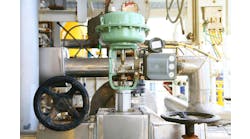Read Also: Sinopec Executive to Deliver Keynote At 2013 General Assembly
I was presenting a paper in the latter part of 2010 with my friend, distinguished technologist of Emerson Process Management, Marcos Peluso. He has has contributed greatly to the success of fieldbus and its widespread adoption. The aim of our paper was to dispel some of the fear, uncertainty and doubt that had arisen from the struggles of early adopters. We were doing a little math to show that, even with the more expensive fieldbus infrastructure (couplers, power conditioners, terminators, etc.), bussed I/O was still a clear winner.
Then a member of our audience interjected, "I can do the same thing with remote I/O. There's been too much hype about the cost savings of fieldbus!" he wailed.
I was a little unprepared and admittedly befuddled by this argument. True, early proponents of fieldbus were at times prone to hyperbole when claiming savings from installing fieldbus instead of point-to-point, but in recent years that sort of marketing zeal had seemingly moved to wireless. Was our listener carrying a grudge from 1999?
I had never thought of fieldbus as remote I/O. To me fieldbus was the new 4-20 mA, an open digital standard for the integration of microprocessor-based devices with microprocessor-based DCS systems. Remote I/O was an expedient compromise for lower priority and indicate-only measurements. In the predominant cultures of the large process industries, remote I/O was rarely considered an acceptable choice for robust control. Why? Remote I/O requires field-sourced power and a geographically diverse, secure and redundant backhaul network that itself may require field power for repeaters, media converters and switches.
If you're running an ethylene cracker or a refinery, you don't like losing your eyes—critical measurements and controls—when the lights go out, even if it's only for forensics. It's possible to make remote I/O processors, power supplies, networks, repeaters, media converters and switches redundant, and even to have some sort of UPS power out in the plant area, but it's not a trivial or inexpensive effort to engineer, deploy or maintain. And when you're done, what you have is "remote I/O."
Fieldbus has this much in common with remote I/O: it brings in a multitude of information on a single pair of wires. Sure, you're limited to 16 to 32 devices on a pair, but each of those devices can be a portal for eight or more process variables, their statuses, device diagnostics, and closed-loop control. One Pepperl+Fuchs discrete device can operate and monitor the limit switches and solenoids of four on-off valves. One Rosemount 848T can communicate eight temperatures from diverse sensors or other analog inputs. Application by application, you can pick and choose whether you need inputs or outputs, analog or discrete, modulating valves, and on-off valves or single-variable transmitters. You can add what you need, where you need it, in the precise quantities you need it, and it all shares the same pair of wires. The majority of devices, especially valve positioners, are powered over the same pair from the UPS-powered and battery-backed-up control house. And, you get all this without changing a single I/O card.
What you get is "virtual marshalling," all the copper-saving benefits of remote I/O, and a modern and robust solution for process control at the same time. Engineering leaders such as Sinopec's Rong are realizing millions in savings in China—and the money spends the same all over.






